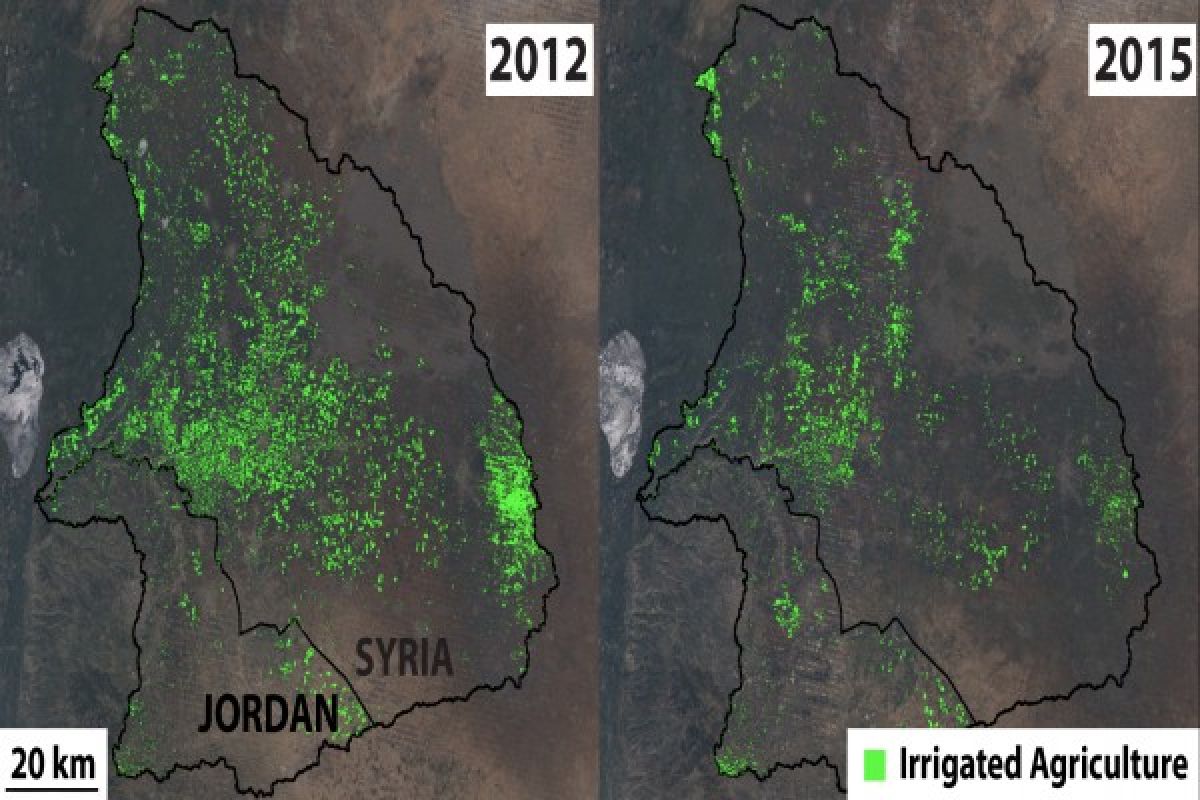The water management practices in Syria have changed and that`s visible from space."San Francisco (ANTARA News) - Researchers have analyzed satellite data and determined that the civil war in Syria and subsequent refugee migration caused sudden changes in the areas land use and freshwater resources.
In what was believed to be the first effort to demonstrate detailed water management practices in an active war zone, the researchers at Stanford University found the conflict led agricultural irrigation and reservoir storage to decrease by nearly 50 percent compared to prewar conditions.
"The water management practices in Syria have changed and thats visible from space," said Steven Gorelick, a professor in Stanfords School of Earth, Energy & Environmental Sciences, and co-author and principal investigator of a study published in the recent issue of Proceedings of the National Academy of Sciences.
The study focused on impacts from 2013 to 2015 in the Yarmouk-Jordan river watershed, which is shared by Syria, Jordan and Israel, and looking at water management and land use on the Jordanian side of the Yarmouk basin and in Israels Golan Heights as a baseline, Reuters reported.
Gorelick noted that the war "has resulted in a reduction in agricultural land in southern Syria, a decline in Syrian demand for irrigation water and a dramatic change in the way the Syrians manage their reservoirs."
It was study co-author Jim Yoon, a PhD candidate in Earth system science at Stanford, who noticed an increase in Yarmouk River flow based on streamflow data from Jordans Ministry of Water and Irrigation and thought of the idea to study the Syrian wars impact on water resources.
However, "the big challenge for us was that it was going to be next to impossible to get on-the-ground data in Syria," Yoon said. "We couldnt really close the story without this information in Syria - that was what led us to use remote sensing data."
Using composite images of the 11 largest Syrian-controlled surface water reservoirs in the basin, the researchers measured a 49 percent decrease in reservoir storage, and a 47 percent decrease of irrigated land in the basin.
Syrias abandonment of irrigated agriculture, combined with the regions recovery from a severe drought, caused increased Yarmouk River flow to downstream Jordan, one of the most water-poor countries in the world.
"Its the first time that we could do large-scale remote sensing analysis in a war zone to actually prove a causal relation between conflict and water resources," lead author Marc Muller, a postdoctoral researcher in Gorelicks lab, said in a news release from Stanford.
"With these new tools, you can do analysis and iterate very quickly -- the effects were so strong, it was really easy to see right away."
Editor: Priyambodo RH
Copyright © ANTARA 2016












